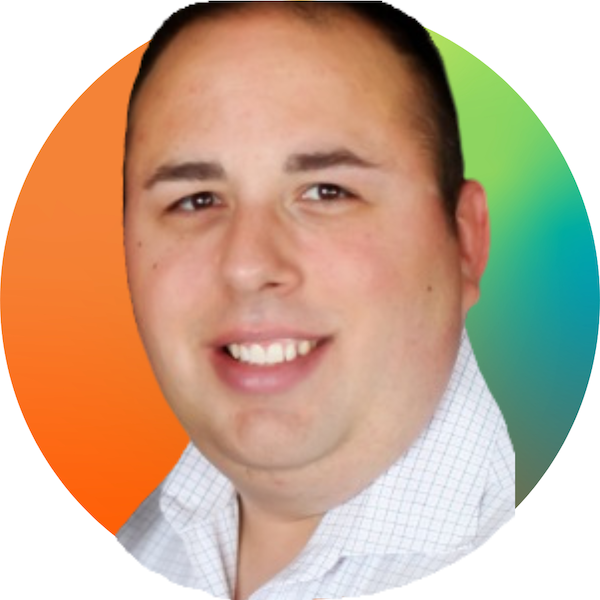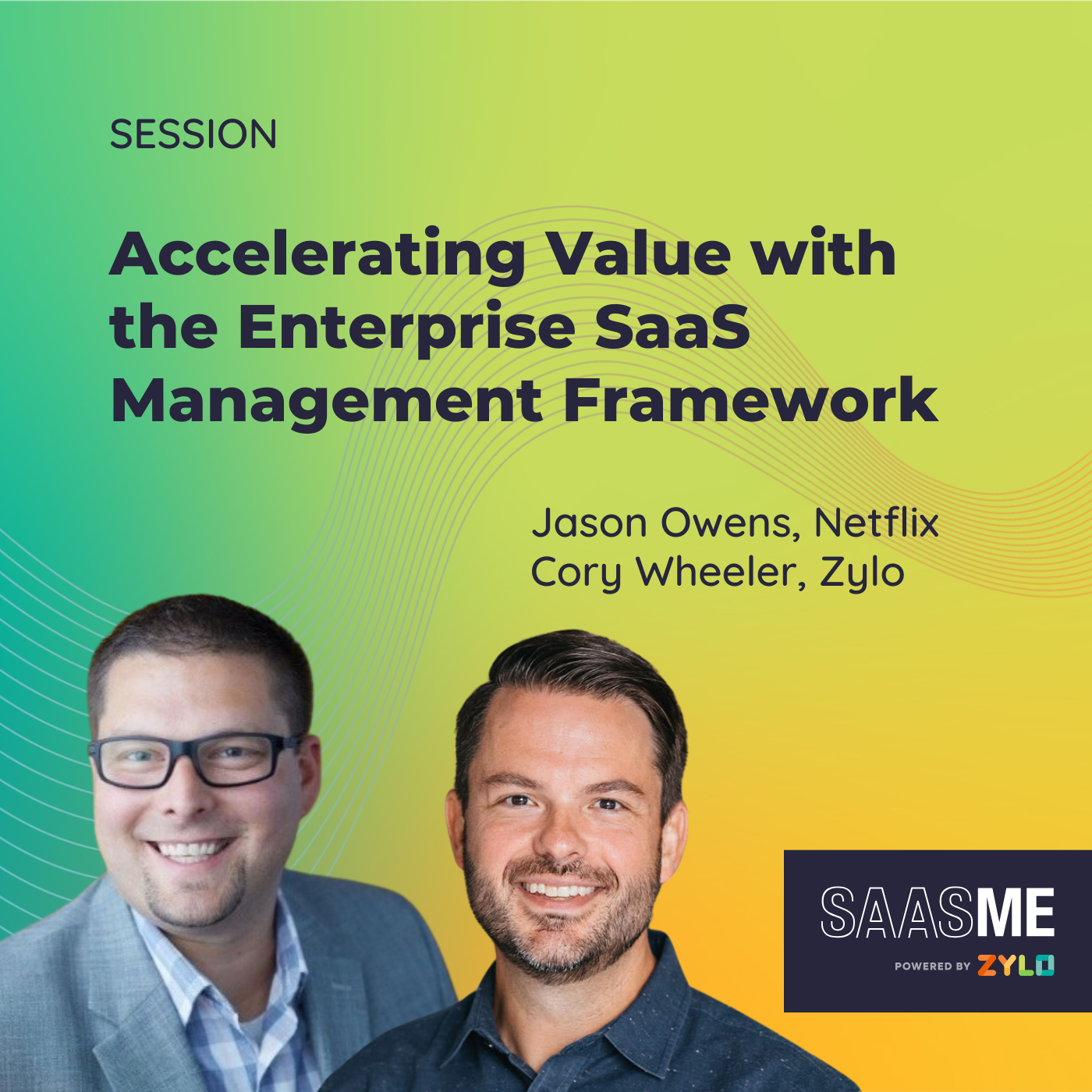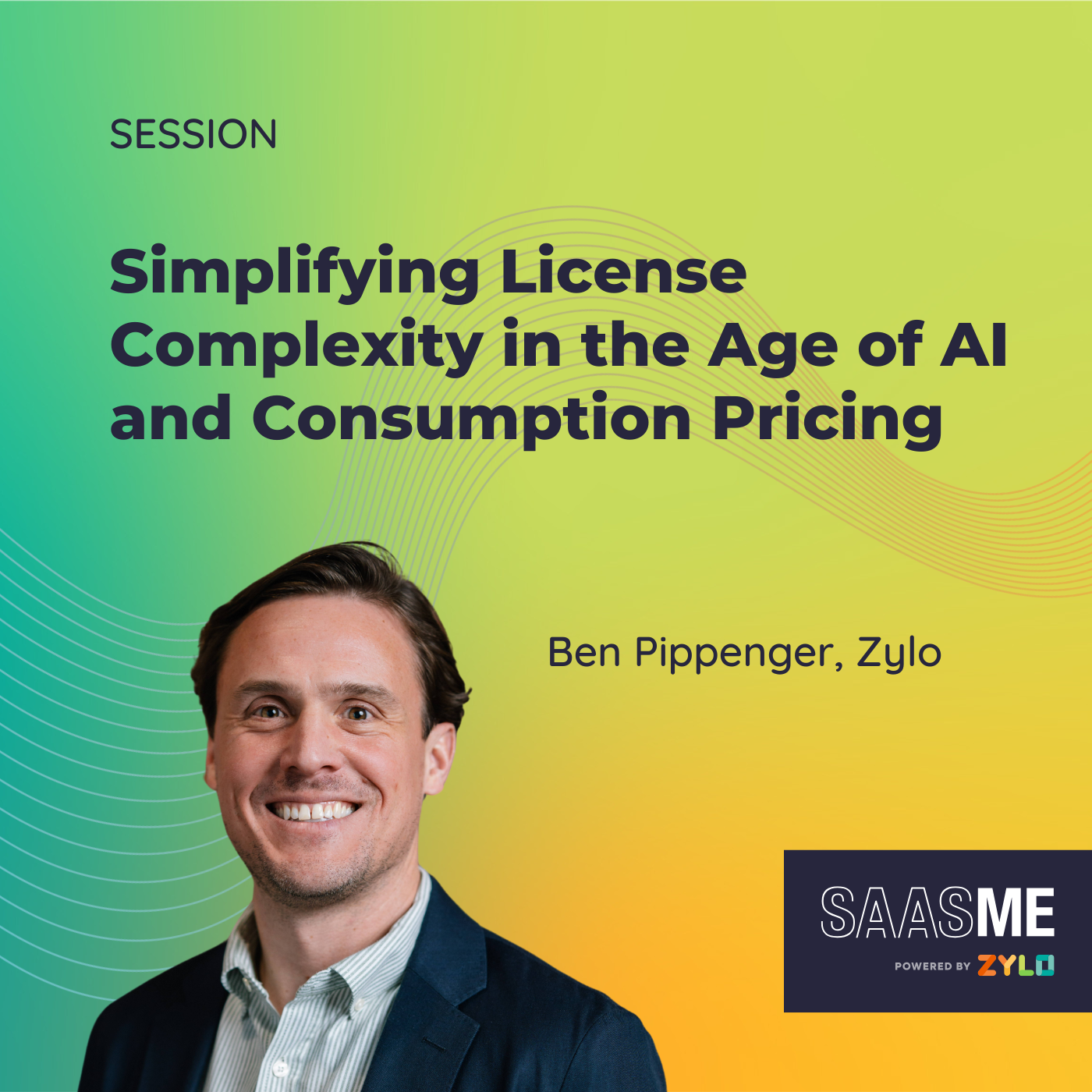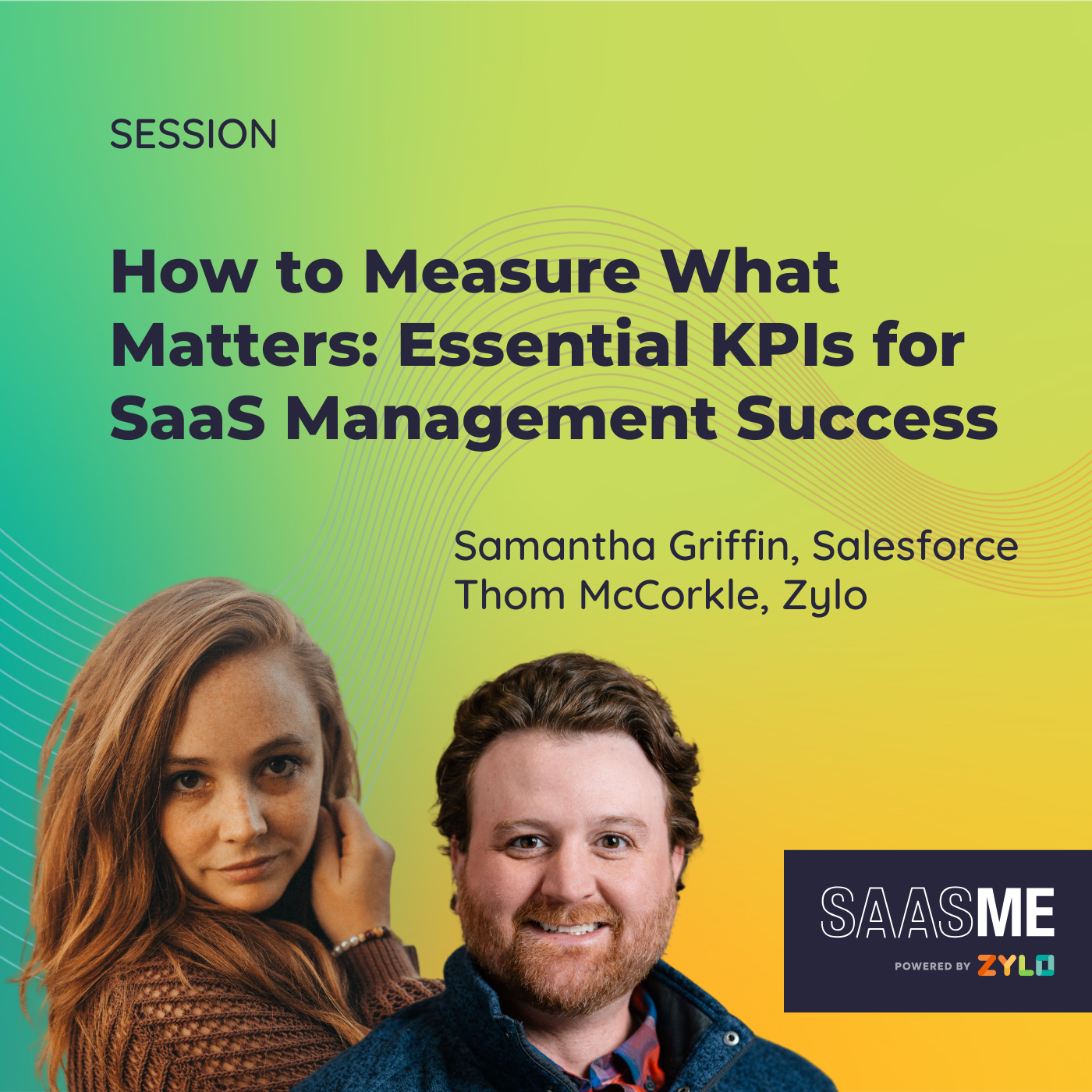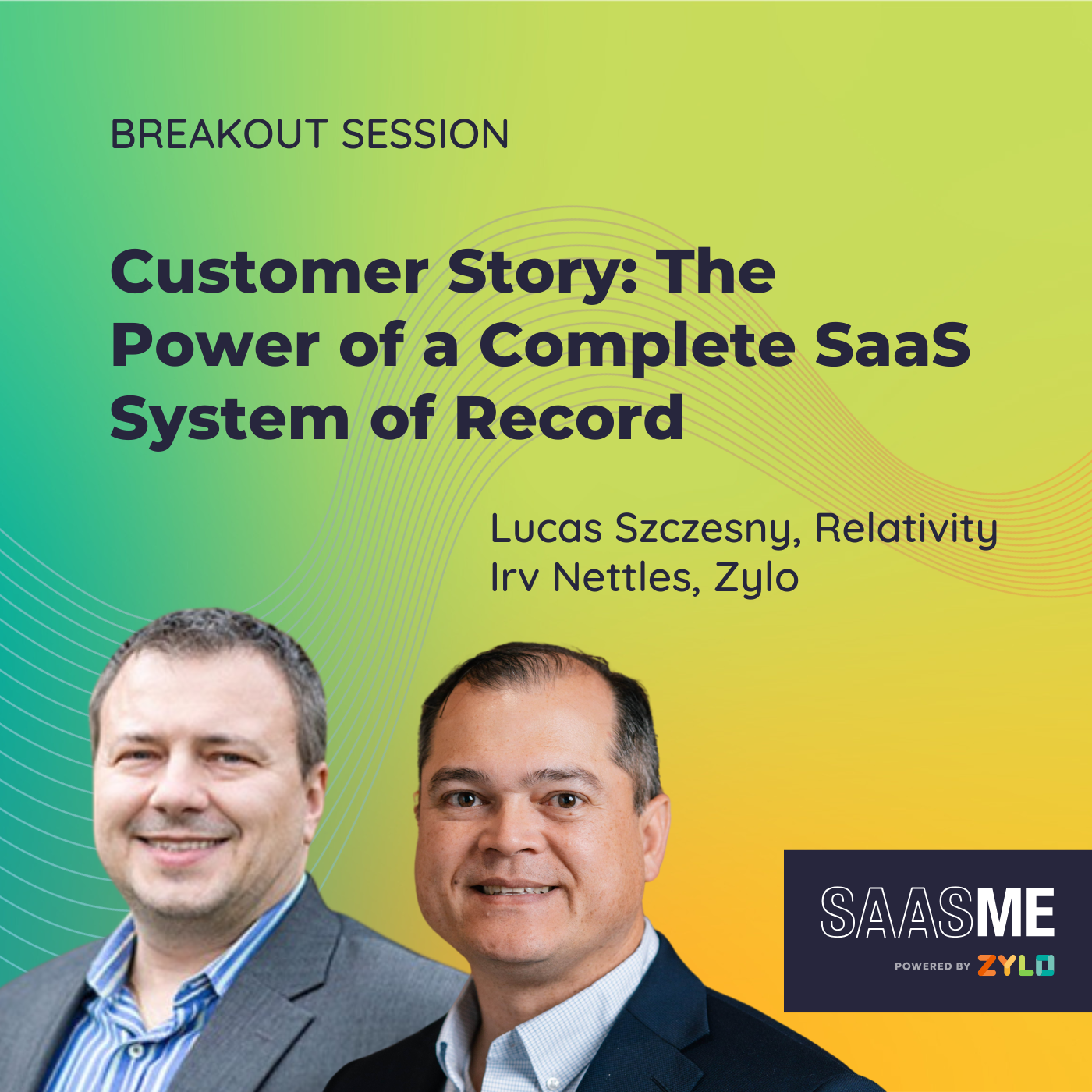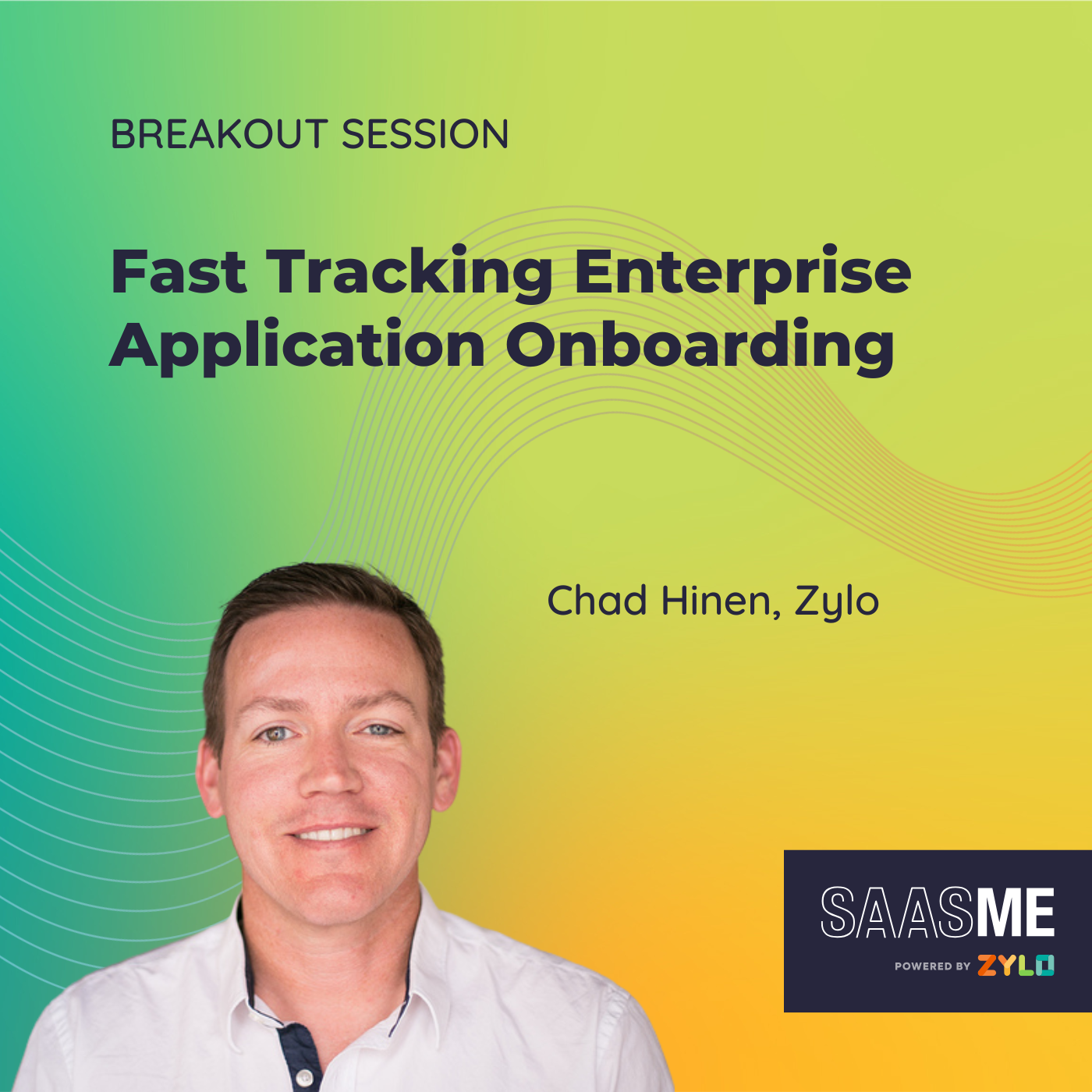The Principles of FinOps + Managing Your SaaS Environment
- 0.5
- 1
- 1.25
- 1.5
- 1.75
- 2
Michael: Hello, and good afternoon, and thank you for joining our SoftwareONE breakout session. The principles of FinOps and managing your SaaS environment. Next slide. So I'd like to introduce to you today's presenters from SoftwareONE. We have Dan Ortman, our Global FinOps Director, and also a FinOps governing board member, and we also have Russ Eicholtz, Practice Lead for SAM Managed Services. Dan and Russ, please take it away.
Dan Ortman: Awesome. Thanks, Michael. Super excited to be here. As Michael said, I look after our global FinOps practice, and we're going to talk a little bit about what FinOps is, and what that means, and why we're talking about it when it comes to SaaS today, so very excited. My background is actually an IT background, and I've been with SoftwareONE for going on nine years now in various roles, but the last several years, I've dedicated it to cloud cost optimization and cloud spend management. So there's certainly several stories that I'll share with you today, and looking forward to it. Russ?
Russ Eicholtz: Yeah, thanks, Dan. Again, Russ Eicholtz, I'm the practice lead for our managed services. I've been with SoftwareONE for just about 12 years now, all of them in some form or capacity with software asset management. I'm currently running the managed services side of the house, and looking forward to today's topic. So with that, here's a quick shot of our agenda. Dan's going to go into some of the FinOps principles, domains and overall framework, and then we're going to dive into a couple of those principles and how they relate to software as a service, and then we will go ahead and provide some key takeaways and some follow up for you all. So with that, I will pass it over to Dan.
Dan Ortman: Thanks, Russ. So I get asked this fairly regularly, and the question is," Okay, we sort of get what FinOps is. Can we apply that to other things? Can we apply that to SaaS? Can we apply that to Office 365?" There's all sorts of questions that come up, but before we sort of dive into what the answer to that question is, let's talk a little bit about what FinOps is. Reason I still like to go into this is, I would say about a year ago, there was no question if we were talking FinOps, we needed to do a level set. What is FinOps? Sort of a 101. What's interesting is, over the last year, FinOps has become such a popular framework that we don't have to do that as often. However, there are a lot of intricacies to it, and FinOps, in some cases, mean different things to different people. So we want to level set a little bit about what it means to us, and how we participate in the FinOps Foundation. So what is FinOps? We'd like to talk about it as the operating cloud, or the operating model for the cloud. And what's interesting about FinOps is, it's not always just about cutting costs or saving money. Sure, that's oftentimes a big outcome and that's part of the goals, but the ultimate goal, the Nirvana of FinOps, is getting the most business value out of your cloud investment, which is a lot different, because if you're spending more in the cloud year over year, like most organizations are, it's so critical to look at, what is the value on that investment? What are we getting out? How are we measuring that? How are we getting to unit economics? So that's what FinOps is all about. What you're seeing here on the screen is what the FinOps Foundation calls the poster. And I'm not going to go into every detail of this poster, but there's a few important things on here that relate to how we're going to walk through this presentation today. The principles are the six core principles of the FinOps framework. As I said earlier, this is very quickly becoming the industry standard. The principles are what we're going to focus on, so let me skip ahead to personas. The personas are also very important because when it comes to FinOps, especially what we see day to day from a hyperscaler standpoint and the speed at which everything changes, having this as a cross- functional practice is absolutely critical to the success of a FinOps practice. It's not just IT. It's not just ITAM. It's not just procurement. It's not just SAM. It's all of these different functional roles together make up a FinOps practice. Another thing that's really important are the phases. There's three phases to FinOps: inform, optimize, and operate. One of the core principles we're going to get into later, I'll come back to these phases, so just remember those three. Another thing is the maturity levels. So we like to talk about FinOps in a crawl, walk, run standpoint because you don't always necessarily want to get to a run state in every aspect of FinOps, but there's some things that are low hanging fruit that you can get to a run state very quickly. So in other words, when you're building a FinOps practice, there are certain things that are in a crawl state, and certain things that are in a run state, and that's okay, that happens to everybody. And then finally, the domains you see on the bottom are different areas of the FinOps framework as you start getting into a deeper layer of detail and implementing the framework. Okay, Russ, let's go to the next slide. Oh, sorry, yes, so the one important thing, we are only going to focus on three of the core principles here. Three of these that are highlighted by the arrows are directly aligned to SaaS. And so, what we wanted to do in this presentation was dive directly into these three, and how implementing a FinOps practice, from a hyperscaler standpoint, is very, very similar to implementing a SaaS program. So that being said, Russ, let's jump into it.
Russ Eicholtz: All right, thanks, Dan. Yeah, so first we want to say," Well, why is this important?" And Gartner recently did a study, among other areas as well, but by 2025, most organizations that have an integrated SAM and FinOps function will actually report 50% less shelfware than those that treat FinOps separate from ITAM, software asset management, those types of functions. And then also, 40% of organizations, due to complexity of the licensing of SaaS in general and cloud, 40% of those organizations will end up utilizing some sort of managed service when it comes to software asset management and SaaS. So two very important statistics from a research perspective in terms of what is coming down for the future of SaaS and how to properly and proactively govern it. So with that, I'll turn it over to Dan and we'll talk about the first principle.
Dan Ortman: Okay. So the first of the three principles we're going to go over are: teams need to collaborate. Now, from a hyperscaler standpoint, what we see with this is you oftentimes will have ITAM or SAM is doing one thing, they have one view of the data, they have one set of strategies, and then you have IT doing one thing. Sometimes you have a cloud center of excellence. Leadership has their own view of things, and in order to collaborate with all of these cross- functional roles, it's really important to start with the executive sponsorship. You don't have that executive sponsorship, it's very easy for all those different teams to have completely different KPIs. And if they have completely different KPIs, it's very difficult to change behavior, which is ultimately what has to be done in order to optimize the cloud spend. So if you have these siloed divisions and there's no executive sponsorship, they're going to stay siloed, they're not going to collaborate. But with that executive sponsorship, you can start to get teams to come together. You have a common thread of communication, why this is important, what's in it for me, and you can effectively do change management in a much quicker, much more organized fashion, if you have that executive sponsorship. So that's why we're highlighting that here. But overall, teams collaborating is absolutely critical when it comes to a FinOps practice, especially with the hyperscalers. So, Russ, talk us through how is that similar when implementing a SaaS program, just like what we do with the hyperscalers.
Russ Eicholtz: Yeah, you pose a great topic around collaboration. And so, anytime we're working with customers and various business units, coming from an ITAM position and going out to places like security and procurement, we have to understand what they find valuable. And that's where we have to work with them to understand what is valuable, and to be able to take the data that we have access to, however we swizzled it, and produce those insights for those individuals and for those owners to actually have an impact with how they're currently managing their SaaS environments. Another thing that is sometimes tricky when it comes to working with those other business units and application owners is the idea of trying to centrally manage those IT assets. And by doing that, that enables the business to properly manage the life cycle of the assets and the vendors. Again, some application owners might push back and say," We don't need the assistance there." However, through collaboration and everything, that allows us to properly govern the SaaS environment from a licensing perspective, because those licenses are changing all the time, the metrics and how they are consumed, and where they're purchased, how they're purchased, that changes all the time. So by allowing us to help proactively get involved there, we can help govern those SaaS applications and really make sure that everything is on the up and up. And lastly, and I really liked how you talked about KPIs and metrics, Dan, there's a thing. If you can't measure, it's not worth it. And so, you shouldn't be setting KPIs or metrics with those stakeholders and business owners and application owners. You shouldn't be setting a KPI or metric if you can't actually measure it, and if it's not going to provide value to those individuals and owners. And so, you have to work back and understand, what do they want to see? What value can we drive for them? And ultimately, does it make the business more efficient? Can we proactively maintain it? And those types of questions need to be answered. So ultimately, if you can't measure it, don't bother. So, Dan, I'll turn back to you.
Dan Ortman: Yeah, love that. Okay, so the next principle of FinOps that we're going to go into here is: everyone takes ownership for their cloud usage. One of those statistics that I absolutely love from the FinOps Foundation... They do an annual survey, and what we've discovered over the last couple years is the number one challenge for a FinOps practice isn't," How do we figure out how to save money? What tool should we use from a overall standpoint, or how do we manage a FinOps practice?" That doesn't end up being the number one challenge. The number one challenge is actually getting engineers to take action. So having this culture of accountability, this change that has to take place for people to take ownership is such a critical thing. So the way that we like to word this is, the ultimate utopia of this would be if everyone that's impacting the cloud spend would treat that as if it were their own business. If it were their own money, they would make completely different decisions. They wouldn't take their credit card out and just haphazardly order subscriptions because it would take a couple extra days to run it through IT, or that sort of thing. And then tying it back into some of the last points we made, if the KPIs are aligned, then you're going to help to drive that change. You're going to help drive that change management. So, again, I love this statistic. It's one of the things that has drove so much around the FinOps Foundation and that getting engineers to take action is such a big deal. And now, Russ, with SaaS, I think it's not always necessarily engineers are developers because it's a little bit easier to restrict who has access to a cloud tenant versus who can just go order some software, order a subscription with a credit card and have some shadow IT. But the principle behind this and having everyone treat it like it's their own business, and that culture of accountability behind that, I imagine that's really similar when standing up a SaaS program, so talk us through that.
Russ Eicholtz: Yeah. This is something we run into all the time, and I'm sure a lot of people out there can absolutely relate. My team, on a daily basis, works with various owners, mostly ITAM directors in the SAM space, and traditionally it's been on- prem and that type of stuff. And as we've moved to SaaS, it's kind of the same story. How do we get the... not necessarily the ITAM team,'cause I think they probably understand it better than most, but how do we get other people to take action? And that action comes down to who is buying versus who's going to step up and own that, and who should own that. And application owners, maybe even to a fault when it comes to SaaS, are maybe too gripped onto those applications and they don't quite understand the benefits that ITAM and a properly running SaaS program can actually provide. And by properly managed SaaS program, I mean the people, the process and obviously the technology that's bringing in the data. So ultimately, we got to figure out a way to bridge that gap and using the data that we have to help those application owners take action based on some of the recommendations that we provide. We also see, with regards to application owners and not being necessarily centrally managed, there can be a lot of waste and redundancy, or duplicate applications that are out there, and ultimately, if we're trying to drive the software catalog and the number of applications down to a more manageable number, some customers might be at 10,000 applications, some might be at 3000, all of them have been trying to reduce this, and so, we need applications to really... Sorry, we need application owners to really come in and, again, understand the business and run it like they own it to help the overall organization reduce that waste, reduce that cost, and come to a much cleaner environment. So we see that particular problem all the time. And then finally, what's interesting with the way environments are ran today, the number of stakeholders that are involved in an IT asset management, and the SaaS process in general, is skyrocketing. Now more than ever, we have to provide value back to the C- level. They need to see cost savings, whether that's hard dollars or soft dollars. Finance and procurement are more involved than ever. And we can help them understand where these purchases are being made, how they're being made, and ensure that whatever's hitting the budget sheet, we have visibility into that. Along comes security with all these new SaaS applications in the environment, some of them are approved, some of them are blacklisted. It doesn't matter. We need to understand what is a potential risk and be able to give that to security at a moment's notice. So there's a lot more IT stakeholders out here that are kind of peeking in and getting interested in terms of what SaaS or what ITAM can do and what they can surface from a visibility perspective. I'll pass it back over to you.
Dan Ortman: I always joke that... Well, it's actually not a joke. Engineers not taking action isn't because they're bad corporate citizens. It's because their KPIs aren't aligned to cutting costs. It's to innovating, speed, uptime, all of those sorts of things why we use the cloud. So it sounds like those users that are buying SaaS applications, it's the same thing. They're not bad corporate citizens, they're trying to get their job done. So that takes us to the final principle here, and I know we promised to keep this within 20 minutes, so we're going to have to rock through this one. Reports should be accessible and timely. This is so big. This takes us back to the three phases of FinOps, and that's the very first one, is the inform phase, and this is where the tool is critical. You have to have the right technology in place so that everybody is looking at the same, clean, consistent data. If everybody's looking at different data, some people have spreadsheets, some people are using Power BI, some people are using this or that. If everybody's looking at something different, it makes it so difficult to make overall strategic decisions and move forward with a strategy to optimize that spend to get the most value out of the investment. So, again, Russ, I think same thing going from the hyperscalers to SaaS. Talk us through how it's the same.
Russ Eicholtz: Yeah, I really like this reporting and decision making because, and I can sit on my soapbox all day and talk about trustworthy data. In order for me to do my job, in order for a consultant or an ITAM director to do their job, we have to be able to trust the data. I used to say it has to be complete, it has to be current, it has to be correct in order for you to be confident in the decisions that you're making. And so, not having that trustworthy data, whether it's coming from a procurement source, from an inventory source, whatever source, CMDB, you name it, you have to be able to trust that data in order to make the decisions. And on top of that, you have to be able to know the changes that are occurring within your software licensing, whether it's different metrics, user based, install based, concurrent based, whatever it is, it's almost impossible to track every change that comes out every day. And so, having the appropriate tools that are up to date and that can provide that information to you on a regular basis is very key. That helps you fine- tune what you should be doing with your O 365 environment, or your Salesforce environment. Those things help you immensely in this space. And then having that visibility into how the licensing works and how the consumption is can help you reduce that risk, and more importantly, optimize that cost. Instead of the dollars just going out the window, you can be able to track and manage that more proactively, bring some of that money back inside the house and use it in other areas. And finally, the trending. Trending has become very important, and it's something that is the on- premise world of when it comes to SAM, there wasn't a lot of trending analysis done. However, when you look at SaaS, when you look at cloud and you look at your future spend, it's very important to know where those dollars are flowing. What's going into what? What are your installs doing? What are your renewals doing? And understanding that trending to be able to say," Am I making a positive impact on the business, and am I making the right decisions to either optimize that cost, reduce that risk, procure more efficiently, manage my vendors better in those types of areas?" So really quick, again, I could spend all day talking about how trustworthy data is kind of the foundation for all of this, but definitely worth noting there.
Dan Ortman: Yeah, love that. And timely reporting, too. How crazy is that changed from a decade ago, and what we thought of as timely reporting compared to what we think timely reporting is today?
Russ Eicholtz: Absolutely, got to have it now.
Dan Ortman: Yep.
Russ Eicholtz: All right. Yeah, so, again, it was a short presentation. However, I think there are a couple key takeaways for everybody on the call to look at. So, again, I'm a big fan of defining meaningful measurables, and not just for the ITAM environment, or the ITAM business, but also for security, procurement, finance, the application owners themselves, being able to provide the value that they're seeking so that they're bought to what we're doing from an ITAM perspective, and from a SaaS perspective. Dan really went into collaborate across the business. This is a very important topic, now more than ever. I'm not going to harp on it too long, but ultimately, we need to make sure that we're reaching across, breaking down some of those silos and helping our business owners understand the value that we drive, and how we can help them manage their business more effectively. And then my last talking point is, engage managed service providers because that helps you drive the value. Managed services providers like SoftwareONE should be able to help provide that reporting and that recommendations and optimizations to help you drive value across the entire organization and back up to your C- level. Dan, I'll leave you with the last one.
Dan Ortman: Yeah, thanks, Russ. I think the answer to the question, can we use the FinOps principles we're leveraging for the hyperscalers for SaaS? I think the answer is pretty clear yes. And the culture change required for a SaaS governance program is the same culture change that has to take place for a FinOps practice. And these core principles can absolutely apply in both scenarios. So yeah, I think the answer's yes.
Russ Eicholtz: Perfect.
Michael: Awesome. So I'll go ahead and bring things home. So thanks so much, Dan and Russ, for that overview. And with that, we'd like to thank you, the audience, for attending today's SoftwareONE breakout session. We hope you received a great introduction to FinOps and how it relates to managing your SaaS environment. If you'd like to learn more, please visit our SoftwareONE Virtual Booth where you can chat with our experts, submit any questions that you have and access resources for both FinOps as well as SaaS management. We look forward to connecting with you, and enjoy the rest of your day.
DESCRIPTION
SaaS applications have a multitude of licensing metrics and buying options. Join SoftwareONE for a session around using the core principles of FinOps when managing your SaaS environment. This unique take on SaaS will focus on centralization, ownership, and reporting to help enable optimization of both your SaaS operations and your investment.
Today's Guests
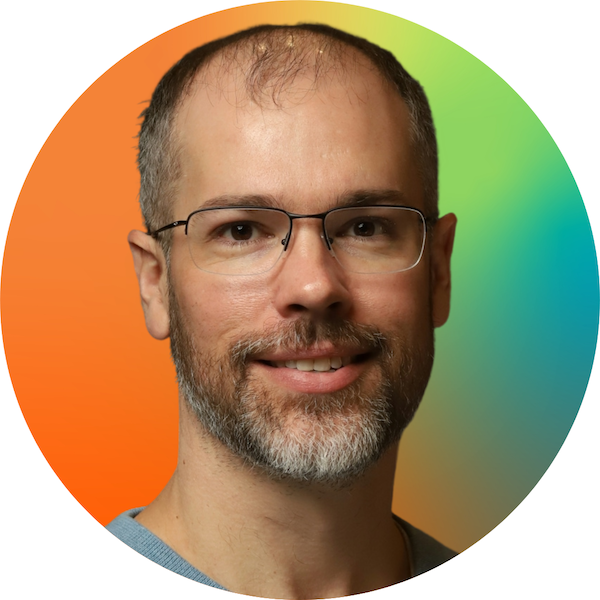
Dan Ortman
